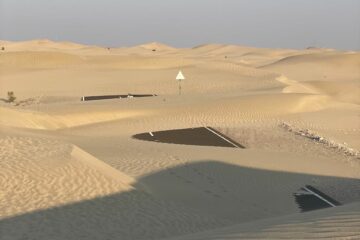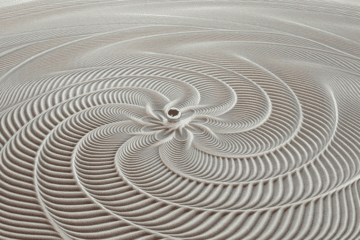Introduction:
In collaboration with the Peabody Essex Museum (PEM), Audemars Piguet introduced a collection of six dynamic, wind-driven beings known as “Strandbeests,” a Dutch term meaning “beach beasts,” created by artist Theo Jansen. This captivating exhibition took place at Art Basel in Miami Beach in 2014. Crafted with remarkable attention to detail, Jansen’s Strandbeests are constructed from PVC tubes, recycled materials, and plastic bottles, showcasing an astonishingly lifelike mode of movement. Jansen’s Strandbeests have undergone a remarkable transformation, evolving from rudimentary structures into intricate creatures capable of responding to their surroundings. They harness wind power, adapt their course in response to water, and secure themselves when facing impending storms, demonstrating a remarkable level of environmental adaptation and survival.
Concept:
“I try to make new forms of life.” — Theo Jansen
Introduction:
A seedbot created by mazyar etehadi is a tiny autonomous robot that aims to convert the uninhabitable sandy desert soil into a verdant landscape. Equipped with solar panels on its back, the tiny baby seal-like robot charges during the day and wanders the terrain at night. When identifying fertile areas, it reports them and plants seeds based on the data received from its sensors and navigation system. The concept of the project is to transform the desert into a garden.
Technical implementation:
The bot’s propeller legs crawl through the sand searching for the right levels of moisture to plant the seeds. Apart from the soil moisture sensor, the tiny robot features a distance sensor, which sends reports to the user for statistical data.
Introduction:
In Morocco, a remarkable phenomenon occurs where certain spiders exhibit cartwheeling behavior. These spiders can perform cartwheels both downhill and uphill on sand dunes, which is truly astonishing. In response to this discovery, Professor Ingo Rechenberg, hailing from the Technical University of Berlin, pursued a familiar path in scientific exploration: he endeavored to create a robot that mimics this unique and ingenious mode of locomotion.
Concept:
The project fosters a deeper understanding of the biomechanics and adaptability of the cartwheeling spiders and their unique mode of locomotion. As a result, the project shouchases the profound impact of biomimicry in advancing robotics and fostering a greater appreciation for the natural world.
Cartwheeling Spider Robot by Evan Ackerman.
Introduction:
ShyBot is an autonomous rover, equipped with sensors and an electronic brain that pushes it to turn away from anyone or thing that approaches.
Concept:
Robots can also have personalities. “This is also ShyBot’s way forward: she does not judge, she does not seek truth, she just wants to be alone. If she encounters an obstacle she avoids it, if someone tries to approach she flees. This is why ShyBot will return to the desert and will do so starting from that line of demarcation between north and south, between simplification and complexity, between conservatism and progress, between wealth and poverty. She will do so by randomly and disorderedly tracing the boundless expanse of parched land, unsuitable for human beings, which the political boundaries claim to divide. She will move across, ignoring them and with the sole purpose of not being annoyed.”


